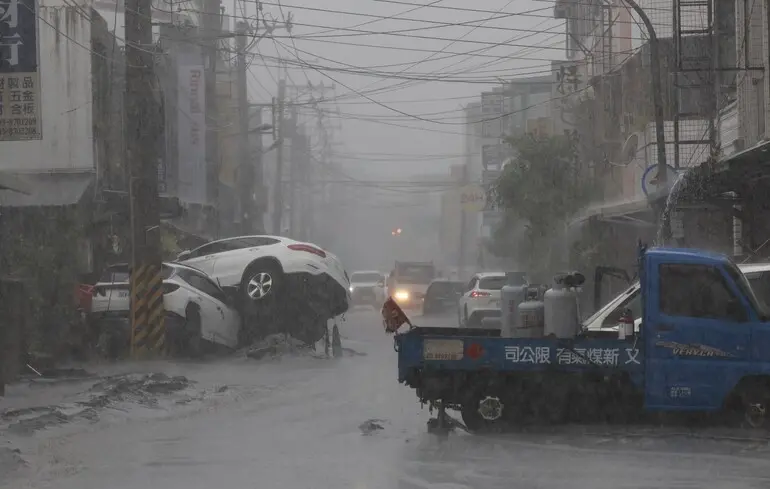Typhoon Ragasa Triggers Massive Disaster in Asia: Hundreds Injured and Dozens Dead

Last week, the southern regions of the Pacific Ocean were ravaged by the destructive Typhoon Ragasa, which emerged as one of the strongest cyclones of this year.
The storm swiftly moved eastward, making landfall along the coasts of heavily populated countries such as China, Taiwan, and the Philippines, bringing widespread devastation and loss of life.
According to local rescue services, at least 15 people have died on Taiwan, with 17 others missing after a dam break flooded towns and villages.
As the cyclone intensified upon reaching southern China, authorities began extensive evacuations, closing schools, businesses, and transportation networks.
Hong Kong faced additional difficulties as storm surges battered its eastern and southern coasts, flooding roads and residential areas, even penetrating into the Fullerton hotel.
Meanwhile, on the Philippines, where Ragasa struck earlier, at least six people lost their lives, and four others remain missing.
The disaster affected over 190,000 residents, leaving behind destroyed infrastructure, uprooted trees, and ruined homes.
Furthermore, a new cyclone, Bualoy, is approaching the archipelago and is forecasted to make landfall in the coming days, potentially causing further damage.
In Guangdong Province, China, authorities have declared the highest warning level for the first time this year due to the red tide caused by the typhoon, with storm waves reaching heights of up to 2.8 meters.
These extreme weather conditions triggered flooding and disruption along the coast, prompting emergency measures to evacuate thousands of people and reinforce safety protocols.
Experts emphasize that this cyclone serves as a stark reminder of the importance of preparedness and effective response to mitigate human and infrastructural losses.
Past typhoons like Hato and Mangkhut, which caused billions in damages in 2017 and 2018, prompted regional authorities to improve monitoring systems and evacuation procedures.
Currently, the region continues to enhance its disaster response capabilities to better handle such natural calamities in the future.
The situation remains tense, with meteorologists warning of potential new atmospheric disturbances in the coming days, underscoring the need for vigilance and readiness to protect lives and property.

